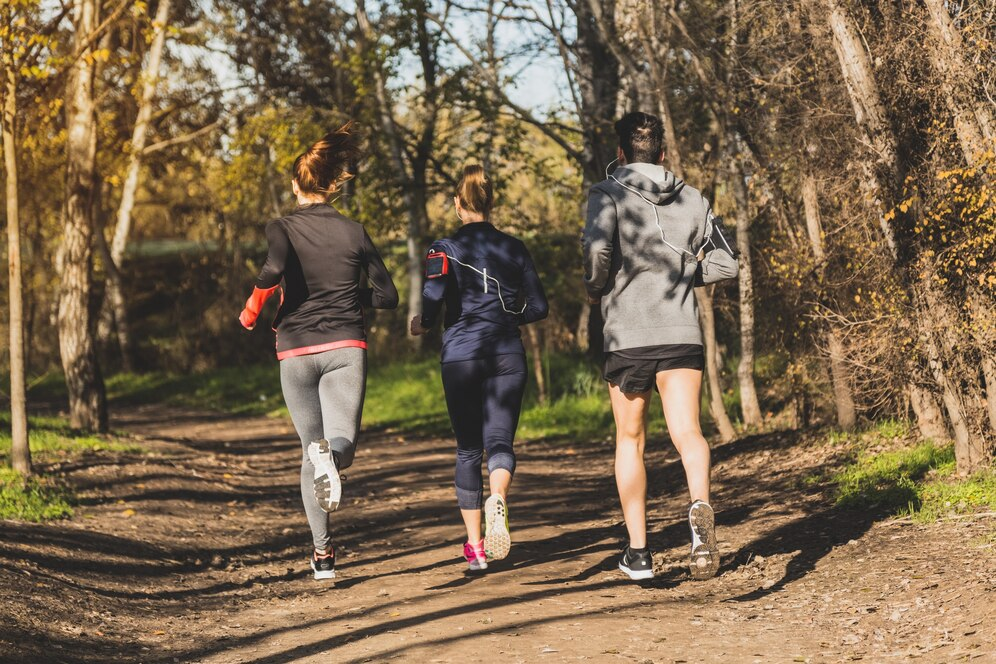
Developing an Eco-Friendly Exercise Regimen for Long-Term Health
Share
Outdoor Activities:
Engaging in outdoor activities is a great way to reduce your environmental impact while enjoying the benefits of physical exercise. Activities such as running, hiking, cycling, and kayaking allow you to connect with nature and reduce your reliance on energy-consuming indoor gyms and equipment.
Running and Walking:
Running and walking are simple yet effective exercises that require minimal equipment. Choose scenic routes in parks or nature trails to enhance your experience and reduce the need for transportation to distant gyms. Running and walking in natural settings can also provide mental health benefits by reducing stress and improving mood.
Hiking:
Hiking is an excellent way to combine physical activity with nature exploration. Choose local trails to minimize travel emissions and bring reusable water bottles and snacks to reduce waste. Hiking not only builds endurance and strength but also allows you to appreciate the natural beauty around you.
Cycling:
Cycling is a low-impact exercise that strengthens the lower body and improves cardiovascular health. Opt for bike paths and roads with less traffic to reduce exposure to pollutants. Consider using a bike for commuting to work or running errands to further reduce your carbon footprint.
Sustainable Gear:
Choosing sustainable gear and clothing can make your exercise routine more eco-friendly. Look for products made from recycled materials, organic fabrics, and eco-friendly manufacturing processes.
Clothing:
Opt for workout clothes made from organic cotton, bamboo, or recycled polyester. These materials are more sustainable and reduce the demand for non-renewable resources. Brands that prioritize fair labor practices and eco-friendly production methods are also good choices.
Footwear:
Choose running shoes and other athletic footwear made from sustainable materials and with eco-friendly manufacturing processes. Some companies offer shoe recycling programs, allowing you to return old shoes for repurposing or proper disposal.
Equipment:
Select exercise equipment made from sustainable materials, such as yoga mats made from natural rubber or cork. Avoid single-use plastics and opt for reusable items like water bottles and food containers.
Reducing Waste:
Minimizing waste in your exercise routine is another important aspect of eco-friendly fitness. This includes reducing single-use plastics, recycling, and repurposing old equipment.
Reusable Water Bottles:
Invest in a high-quality reusable water bottle to stay hydrated during workouts. This reduces the need for single-use plastic bottles, which contribute to environmental pollution.
Eco-Friendly Accessories:
Choose accessories like resistance bands, jump ropes, and weights made from sustainable materials. Look for products with minimal packaging or packaging made from recycled materials.
Recycling and Repurposing:
Recycle old workout clothes, shoes, and equipment through programs offered by some manufacturers or local recycling centers. Consider repurposing items for other uses, such as using old t-shirts as rags or donating gently used equipment to community centers or schools.
Conclusion:
Developing an eco-friendly exercise regimen involves making mindful choices that benefit both your health and the environment. By incorporating outdoor activities, choosing sustainable gear, and reducing waste, you can create a fitness routine that supports long-term health and sustainability. Embracing these practices not only enhances your physical well-being but also contributes to the preservation of our planet for future generations.